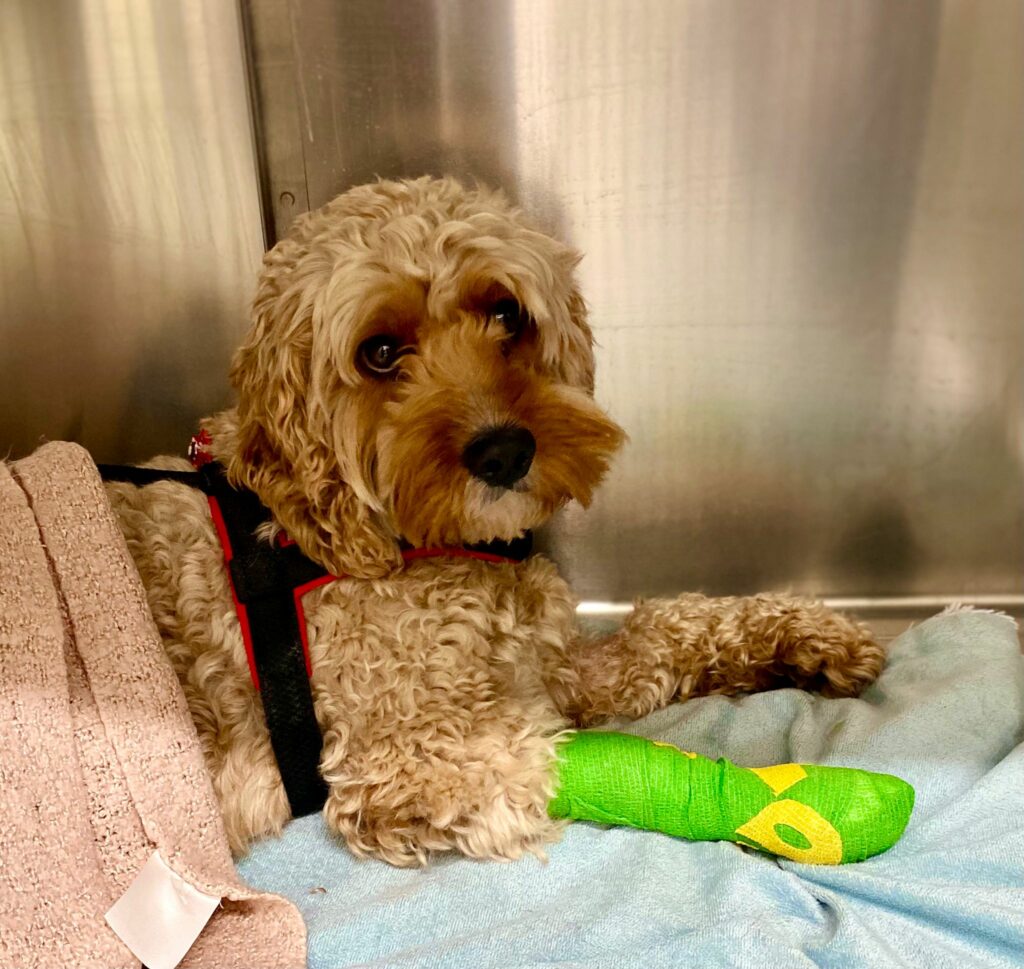
Grass seeds in dogs
Our dogs often love to play in the long grass without a care in the world! In the summer months, it's important to regularly check them over for grass seeds.
The dangers of grass seeds
Although on the face of it grass seeds might look small and harmless, if they get into the body through the ears or under the skin they can cause so much trouble for our pets.
Jo Keenan, Head Nurse at The Pet Vet Doncaster, says: “When you get home after a walk, get into the habit of checking your pet over for any rogue grass seeds. Check inside the ears, nose, eyes, armpits, paws and in-between the toes.”
At our Doncaster surgery recently, we saw Teddy (pictured) who had a suspected grass seed in his paw - it was swollen and sore. We flushed it out to clean any debris and help to prevent infection.

Infection and abscesses
Jo went on to say, “If you find a grass seed, take care to remove it but if any seem stuck or there is any redness and swelling, please call us and get it checked out. Any seeds that enter the body can move around making them difficult to find and can lead to further problems such as infections and abscesses.”
Although the grass seed risk is present for all dogs, long-haired breeds and those with floppy ears are most at risk.
